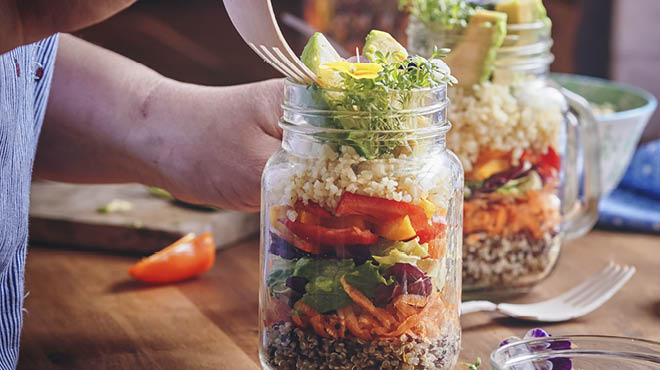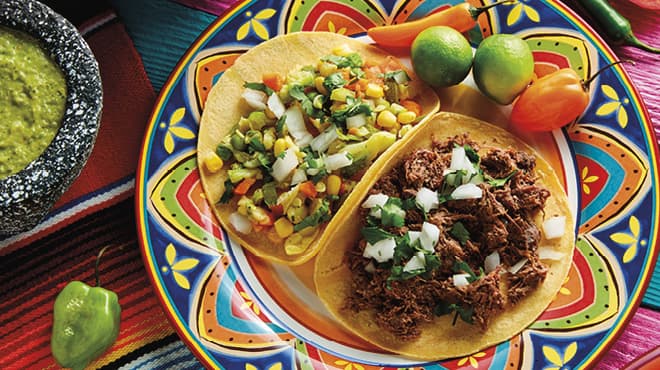Recent Posts
-

-
 Patient StoriesA lifesaver saved: An EMS veteran’s journey from rescue to recoveryNovember 14, 2025
Patient StoriesA lifesaver saved: An EMS veteran’s journey from rescue to recoveryNovember 14, 2025 -

Deciphering your eating plan FAQ: How a registered dietitian nutritionist can help

Do you want to lose or gain weight? Are you pregnant, looking to become pregnant or just had a child? Are you looking for ways to maintain your health in your older years? Are you an athlete looking to boost performance?
Check out this FAQ on how a registered dietitian nutritionist, or RDN, can help you decipher the eating plan that works best for you.
When does it make sense to work with an RDN and what are the benefits?
Lifestyle changes, such as following a healthy eating plan, achieving a healthy weight and regularly engaging in physical activity, can significantly improve your health, reduce your risk of developing chronic illnesses and help you manage symptoms or slow the progression of current chronic illnesses.
Working with an RDN who can provide expert, science-based advice as you make these changes can improve your long-term success.
What kind of training does an RDN have?
RDNs are food and nutrition experts who have graduated with at least a bachelor's degree in nutrition, completed an accredited supervised dietetic internship and passed a national examination. They also must meet ongoing continuing professional education requirements to maintain their registration.
Where do RDNs work?
RDNs can work in various environments including healthcare, food service, private practice and community settings. They also can attain additional certifications in specialized areas, such as pediatrics, renal nutrition, oncology and diabetes education.
Why do I need an RDN? Can't I just figure this out myself?
An RDN will partner with you to develop a safe and realistic eating plan that you can stick with for the long haul. To guide and motivate you, an RDN will use creative and out-of-the-box strategies to help with meal planning, grocery shopping and mindful eating.
What can I expect when I meet with an RDN?
Your RDN will thoroughly review with you your medical history, current diet and eating habits.
Then, with your input, the RDN will develop a nutrition plan that takes into consideration your:
- Food preferences, allergies and intolerances
- Lifestyle
- Finances
- Ability to shop for and prepare food
- Multiple or conflicting dietary needs
The focus will be on foods to include, not just what to avoid. The RDN also will help you identify barriers to success, provide strategies for overcoming them and provide additional guidance as you set goals for yourself.
How do I start working with an RDN?
Most often you'll need a referral from your healthcare professional to work with an RDN. The cost of these visits varies depending on insurance type and coverage. Ask your healthcare professional for a referral to a registered dietitian nutritionist and get started maximizing your nutrition for a better quality of life.
Try one of these dietitian-approved recipes:
Parmesan roasted cauliflower
By Mayo Clinic staff
Serves 6
1/2 cup panko breadcrumbs
1/4 cup finely grated Parmesan cheese
2 tablespoons olive oil
1 teaspoon fresh lemon zest
1 teaspoon finely chopped fresh basil
1/4 teaspoon paprika
1/4 teaspoon kosher salt
3 cups small cauliflower florets
Fill a medium pot with water and bring to a boil. Heat oven to 375 F. Lightly coat an 8-by-8-inch baking dish with cooking spray. In a small bowl, combine the breadcrumbs, cheese, oil, lemon zest, basil, paprika and salt. Use your hands to evenly combine the mixture. Place the cauliflower in boiling water for 3 minutes, then drain in a colander. Place the cauliflower in the baking dish and sprinkle the breadcrumb mixture evenly over the top. Bake for about 15 minutes or until crust is lightly brown.
Nutritional per 1/2-cup serving: 84 calories, 6 grams fat, 1 gram saturated fat, 163 milligrams sodium, 6 grams carbohydrates, 1 gram fiber, 3 grams protein.
Whole-wheat blueberry pancakes
By Mayo Clinic staff
Serves 6
1 1/3 cup white whole-wheat flour
2 teaspoons baking powder
1 tablespoon sugar
1/2 teaspoon cinnamon
1 1/3 cups skim milk
1 egg, lightly beaten
1 tablespoon canola oil
1 cup fresh or frozen blueberries
In a large bowl, mix flour, baking powder, sugar and cinnamon. In another bowl, beat together milk, egg and oil. Add the liquid mixture to the flour mixture and stir until the flour is moistened. Add blueberries and stir gently. Coat a griddle or skillet with cooking spray and heat to medium-high heat. Pour about 1/4 cup of batter onto the hot griddle and cook until browned. Flip and brown the other side.
Nutritional per 2-pancake serving: 163 calories, 4 grams fat, 1 gram saturated fat, 29 grams carbohydrates, 4 grams fiber, 203 milligrams sodium, 7 grams protein.
By Mayo Clinic Health System staff.


